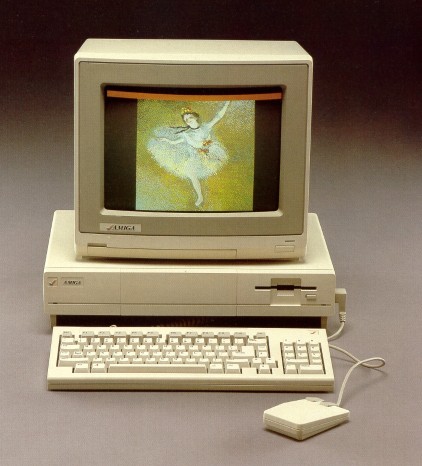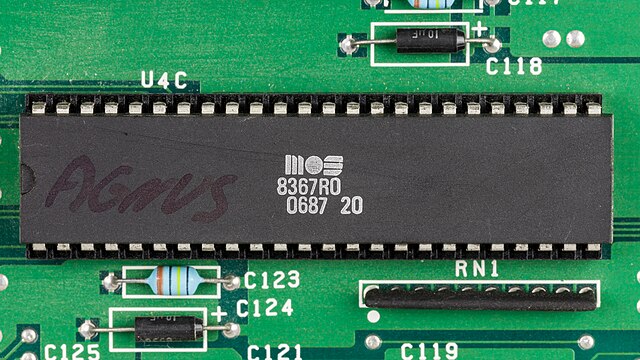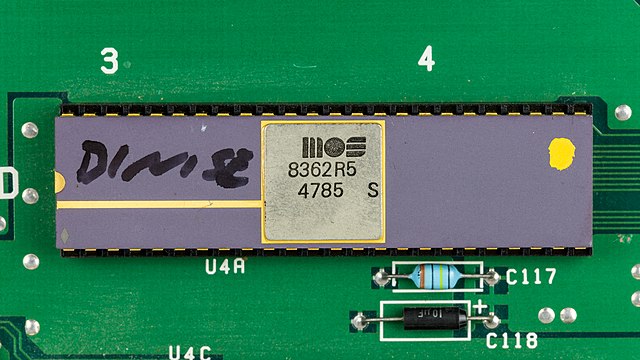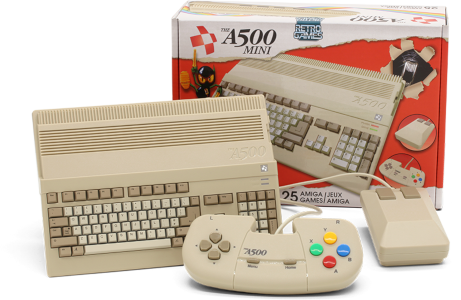Commodore
Amiga 1000 (A1000)
In 1984, Commodore International led by founder Jack Tramiel, was a significant player in the personal computer market, largely due to the popularity of its Commodore 64, which became one of the best-selling computers ever. The market at that time was dominated by 8-bit machines, such as the Commodore 64 and Atari 800. Companies like IBM and Apple were also beginning to introduce more advanced 16-bit computers, such as the IBM PC and Apple Macintosh, pushing the industry toward more powerful systems.
Amiga Corporation, a company founded by former Atari staff members, was working on developing a groundbreaking 16/32-bit computer. Jay Miner, a circuit designer known for designing the graphics chips for the Atari, led Amiga's product development. However, despite their promising technology, Amiga faced severe financial challenges. Recognizing the potential of Amiga's technology, Commodore purchased the company in August 1984 for $27 million USD, providing Amiga with the necessary financial backing and resources to continue their development.


Logos from 1984 for both companies, Commodore and Amiga.
The collaboration between Commodore and Amiga led to the creation of a series of groundbreaking computers that would influence the future of personal computing. But despite the success of the Amiga series, Commodore faced increasing financial difficulties, and in 1994, Commodore filed for bankruptcy and ceased operations. Although attempts to revive the brand failed, the Amiga legacy has continued thanks to a community that has continued to support and develop the platform, keeping the spirit of Amiga alive.
Amiga 1000 (A1000)

Commodore Amiga 1000 (the only model to feature the checkmark logo on its case) setup, along with the Commodore 1080 monitor (sold separately).
| Amiga 1000 specs | |
|---|---|
| Release date | September 1985 |
| Discontinued | January 1987 (On sale for 16 months) |
| Price | $1,285 USD (1985) for the basic system
*Note: The basic system included a keyboard and mouse, but the monitor was sold separately for an additional $495 USD. |
| Processor |
16/32-bit Motorola 68000 @
|
| Memory | The basic system had 256 KB of memory, which could be expanded to 512 KB for an additional $200 USD.
Note: The Amiga also had an additional 256 KB of dedicated RAM (Writable control store) for the operating system, bringing the total internal memory to 768 KB with the expansion. |
| Display |
Palette 4096 colors
Note: The "i" stands for interlaced. This method displays the image in two passes—first showing odd lines and then even lines—to reduce flicker, but can sometimes cause visual artifacts. |
| Sound | 4 x (two in each stereo channel) 8-bit 28 kHz channels, capable of playing sounds simultaneously |
| OS | Amiga DOS (Versions 1.0, 1.1, 1.2, 1.3)
Note: The Amiga's OS is loaded from a floppy disk (called "Kickstart") and written to the 256 KB of dedicated RAM at startup. |
In July 1985, after three years of development, the Amiga 1000 was unveiled at a glamorous event featuring an orchestra, elaborate performances, and appearances by celebrities Andy Warhol and Debbie Harry. At a time when IBM PCs could only display a few colors, and the Apple Macintosh still had a black-and-white display, the Amiga 1000 was revolutionary. It could display up to 4096 colors simultaneously using its Hold-And-Modify (HAM) mode which was good for showing photographs and rendering 3D images. In its standard mode (in games etc), it supported up to 32 colors, far surpassing the Atari 520ST's maximum of 16 colors, which had been released just months earlier.
The Amiga 1000 wasn't just impressive for its graphics. It was capable of producing four-channel stereo sound, making it well-suited for games and multimedia applications. In contrast, the IBM PC at the time was still relying on basic mono sound, while the Atari 520ST was equipped with the Yamaha YM2149F sound chip, provided three sound channels plus a noise channel, which was good, but the overall audio experience was not as rich as what the Amiga could offer.
Additionally, the Amiga's operating system (developed by MetaComCo) supported true multitasking, allowing multiple programs to run at the same time. This was a significant advantage over other systems of the era, which typically only supported single-tasking or cooperative multitasking (where programs have to take turns running).
The key reason the Amiga 1000 could deliver such advanced features was thanks to its use of the best consumer priced CPU, the Motorola 68000 (with a 16-bit external data bus but capable of 32-bit processing internally) paired with the Original Chip Set (OCS), which included three custom chips named: Agnus, Paula, and Denise. These chips, designed by Jay Miner and his team at Commodore and manufactured by MOS Technology, handled most of the graphics and audio, allowing the CPU to focus on other tasks. This coprocessor architecture was a major step forward compared to other computers of its time, such as the IBM-PC and Apple, which relied entirely on the CPU to handle everything from graphics and audio to I/O operations.
Agnus

The Agnus chip coordinated access to the shared RAM. It also has a blitter which was one of the most exciting hardware advancements for the Amiga, as it would not only take the load off the CPU for tasks such as moving blocks of data but would do it much faster. The Agnus also had a copper, which coordinated screen updates.
Paula

Paula was responsible for producing all audio (the processor wasn't accessed for sound generation), It had 4 audio DMA channels that let users create custom sounds with different waveforms, filters, and effects, and it supported stereo output, which was big deal back then. Paula also handled I/O (input/output) functions.
Denise

Denise was the custom graphics chip capable of producing up to 32 colors (from 4,096) and managing up to eight sprites per scanline with collision detection. It worked closely with Agnus to generate the video output, handling the rendering of graphics. It also controlled mouse and digital joystick input.
Inspired by Apple, who signed the inside of the Macintosh 128K case, the Amiga development team decided to do the same. The signatures of 53 members of the Amiga team were embossed inside the plastic shell of the Amiga 1000, but this detail is only found in the Revision 6 (NTSC) and A (NTSC & PAL) models.
Two of these signatures stand out. The first is Mitchey, a paw print representing Jay Miner's beloved dog, who was often considered the 'unofficial mascot' of the team. The second is Joe Pillow, a fictional character. When the Amiga team flew the delicate Amiga 1000 prototype to the Consumer Electronics Show (CES) in January 1984, they had to secure it a seat on the airplane. The airline insisted on a passenger name, and the team humorously chose "Joe Pillow."
Commodore launched a promotional campaign before the Amiga 1000's release. It became the most anxiously awaited computer of 1985, but its commercial success was somewhat mixed. On the one hand, the coprocessor architecture combined with the multitasking OS allowed it to deliver a level of performance ahead of its time. On the other hand, developers had to learn new concepts like managing system resources differently from other computers — making it was a risk to invest in this new platform, especially when established systems like the Commodore 64 had large user bases and proven success. So most programs available for the Amiga were just ports from other systems. The lack of exclusive software, combined with strong competition (brands like Apple and IBM dominated the market), hindered the Amiga's commercial success despite its innovative design.

